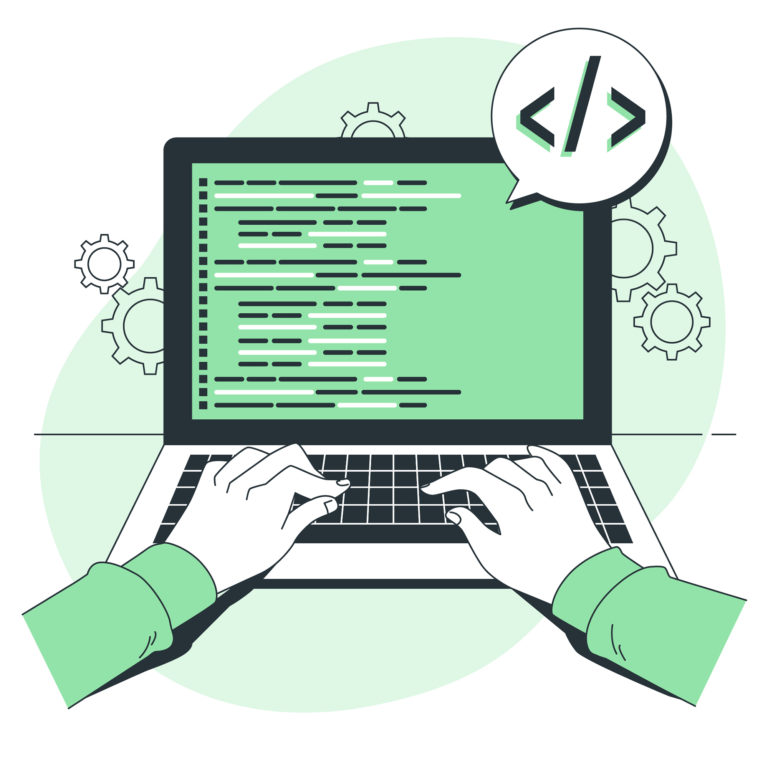The Commercial Usability of GitHub Copilot in Software Development
Software Development made easy with AI
We are seeing explosive growth in the use of AI/ML in literally every digital touchpoint. Why would the coding be left behind? GitHub Copilot, an AI-powered code assistant developed by OpenAI, has been a revolutionary addition to the world of software development. Its capabilities to automatically generate code based on natural language descriptions have sparked a paradigm shift in coding productivity. In this blog, we’ll explore the commercial usability of GitHub Copilot in development using C#, .Net, JavaScript, Python, Ruby, and Go, just to name a few – showcasing how businesses can harness its power to improve software development efficiency, reduce costs, and enhance code quality.

Elevating Development Speed and Efficiency
In the competitive landscape of commercial software development, time is of the essence. Developers are often under immense pressure to deliver high-quality code on time and within budget. Here, GitHub Copilot can be a game-changer.
Rapid Prototyping: With Copilot’s assistance, developers can rapidly prototype ideas and implementations. Writing boilerplate code and common functionalities becomes a breeze, enabling faster proofs-of-concept and iterations.
Streamlining Code Review: Copilot-generated code is often accurate and adheres to good practices. This can significantly reduce the time spent on code reviews, as developers can trust the AI-generated code quality and reviewers can do a quick scan through.
Learning from Copilot: As developers interact with Copilot, they learn new patterns and practices. This learning experience can lead to upskilling and a more efficient coding workflow.
Reducing Development Costs
In commercial software development, cost optimization is crucial. GitHub Copilot can contribute to significant cost savings in various ways:
Reduced Development Time: Faster development means fewer man-hours spent on a project, leading to direct cost reductions.
Minimized Bug Introductions: Copilot-generated code is less likely to contain syntax errors and common bugs, leading to fewer defects and a lower cost of bug-fixing.
Enabling Smaller Development Teams: The increased productivity from Copilot can allow businesses to achieve more with smaller development teams, reducing overall team size and costs.

GitHub Copilot is indeed a powerful way to reduce your overall development cost. In many cases, you may not need extensive development to get simple yet powerful low-/no-code applications made in no time.
Hoonartek’s RapidFrames is a powerful low-/no-code development platform that can deliver transformative business impact in no time.

Enhancing Code Quality and Consistency
Maintaining high code quality is vital for any commercial software project. GitHub Copilot can be a valuable ally in achieving this goal:
Consistent Coding Standards: Copilot-generated code tends to follow good practices, ensuring that coding standards are consistently adhered to across the codebase.
Reduced Technical Debt: Higher-quality code with fewer bugs and issues leads to lower technical debt, reducing future maintenance costs.
Fewer Code Smells: Copilot’s code suggestions are often optimized and cleaner, resulting in fewer code smells and better maintainability.
Addressing Skill Gaps and Onboarding
In commercial software development, dealing with skill gaps and onboarding new developers is a common challenge. Copilot can be instrumental in overcoming these challenges:
Boosting Junior Developers: Junior developers can benefit from Copilot’s suggestions to accelerate their learning and development process.
Tackling Skill Gaps: Copilot can help fill gaps in expertise, enabling developers to tackle tasks that might have otherwise been outside their skillset.
Onboarding New Team Members: New team members can quickly familiarize themselves with the codebase using Copilot-generated code as a reference, reducing the onboarding time.

Even with GitHub Copilot or other automated code generators, you need experienced talent to code right.
Hoonartek goes through a rigorous process of training its people on the latest stack and coding practices that augment their vast experience with 200+ successful go-lives.
Concerns and Mitigations
While GitHub Copilot has undeniable commercial potential, it’s essential to address potential concerns:
Intellectual Property and Code Ownership: Ensure that Copilot-generated code complies with your organization’s intellectual property policies, and the developers are aware of ownership implications.
Code Review and Verification: Despite its accuracy, Copilot may not always generate ideal code. Encourage developers to review and validate Copilot-generated code before integrating it into the project.
Data Security: If you have concerns about code being sent to external servers, consider using Copilot in offline mode, though it may not be as effective without cloud capabilities.
Conclusion
The commercial usability of GitHub Copilot in software development is a powerful tool that can significantly elevate productivity, reduce costs, and enhance code quality. By embracing this AI-powered assistant, businesses can stay competitive, streamline their development processes, and empower developers to focus on solving complex challenges. However, while Copilot presents numerous benefits, it’s essential to strike a balance between leveraging its capabilities and maintaining code quality through careful review and validation. With a cautious approach, GitHub Copilot can be a transformative force for your commercial software development endeavours.
Authors

Amit Bhatia
A visionary with an immense passion for technology, I have 18+ years of Software systems experience.
I represent top leadership in Information Services, making significant contributions towards bringing in domain knowledge management, requirement management, architecture management and software development expertise for the organization.
I am also an Enterprise Architect with 10 years of experience in designing, building and scaling large-scale enterprise applications.


